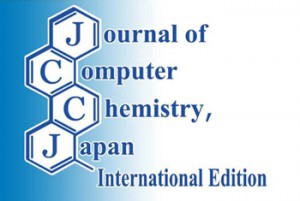[Published online Journal of Computer Chemistry, Japan -International Edition Vol.3, -, by J-STAGE]
<Title:> Analysis of Time Series of the Ambient Dose Rates
<Author(s):> Tomoo AOYAMA, Jun ASANUMA
<Abstract:> Radioactive substances are diffused by meteorological effects and soil property or underground water. The movements affect the ambient dose rate slowly and with smoothing in the long term. We detect the phenomena at monitoring posts in Fukushima. The monitoring post measures the flux from radionuclides; therefore, we discuss relations between the flux and mass density. Time-decreasing of the flux is a function of convection-diffusion of carriers of the nuclides. At the same time, it is also a decay function of radionuclides. We discuss product of the two functions, and get an expression for the time series of radioactive contaminated grounds. By using the expressions, we research changes of typical contaminants in Fukushima. This indicates movements of radionuclides.
<Keywords:> Radioactive cesium, Re-diffusion, Radioactive substance, Ambient dose rate, Forest fire
<URL:> https://www.jstage.jst.go.jp/article/jccjie/3/0/3_2016-0053/_html
<Title:> Analysis of Time Series of the Ambient Dose Rates
<Author(s):> Tomoo AOYAMA, Jun ASANUMA
<Abstract:> Radioactive substances are diffused by meteorological effects and soil property or underground water. The movements affect the ambient dose rate slowly and with smoothing in the long term. We detect the phenomena at monitoring posts in Fukushima. The monitoring post measures the flux from radionuclides; therefore, we discuss relations between the flux and mass density. Time-decreasing of the flux is a function of convection-diffusion of carriers of the nuclides. At the same time, it is also a decay function of radionuclides. We discuss product of the two functions, and get an expression for the time series of radioactive contaminated grounds. By using the expressions, we research changes of typical contaminants in Fukushima. This indicates movements of radionuclides.
<Keywords:> Radioactive cesium, Re-diffusion, Radioactive substance, Ambient dose rate, Forest fire
<URL:> https://www.jstage.jst.go.jp/article/jccjie/3/0/3_2016-0053/_html

